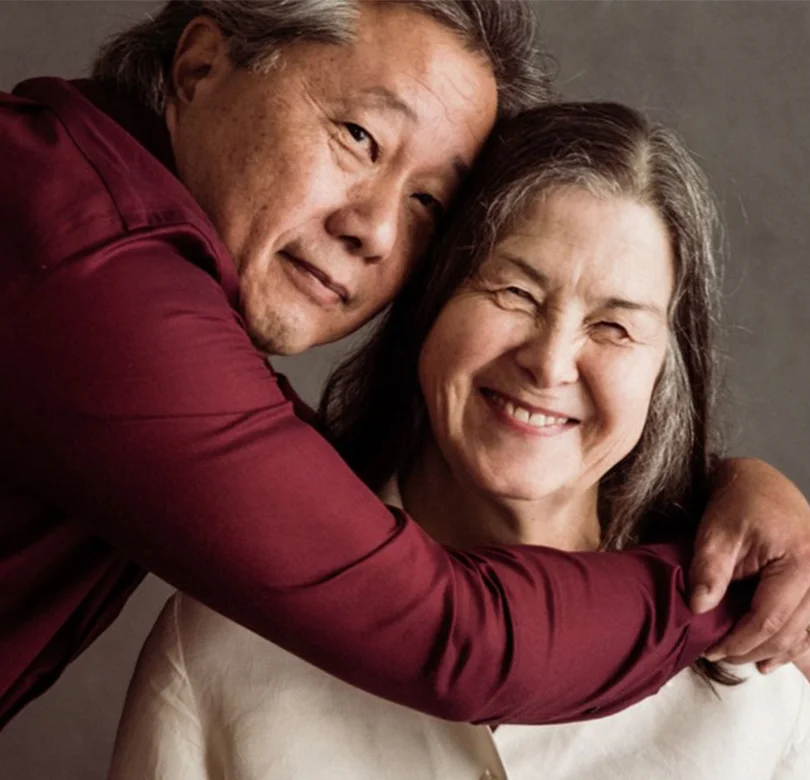What is heart transplant surgery?
Heart transplant surgery is the removal of a failing heart and pre-existing hardware (such as an implantable cardiac defibrillator or pacemakers) and its replacement by a donor heart.
Why is it done?
Heart transplant is used to treat severe, end-stage heart failure. This heart failure may be the result of damage to the heart from:
- coronary artery disease, such as a heart attack
- severe, untreated hypertension (hypertensive heart disease)
- heart valve problems
- infections, such as viruses
- alcohol and illicit drug use
- inherited heart disease
- congenital heart disease (a malformation of the heart a person is born with)
- unknown (idiopathic).
For severely ill patients, a mechanical heart (mechanical assist device) may be used temporarily while waiting for a donor heart.

Donna & Barry both beat heart disease.

What can you expect?
Before the operation
Once it is determined that you require a new heart, you will be evaluated to determine whether you are a good candidate for heart transplant. If you are, your name will be put on the heart transplant waiting list.
- Your position on the list will depend upon how ill you are, and may be moved up over time if your health changes.
- Once on the waiting list, you will receive a pager so you can be contacted immediately when a suitable heart becomes available.
- Since the donor heart has to be transplanted within hours of donation, you may want to stay prepared by making a travel plan ahead and packing a suitcase with your medication for a hospital stay.
Preparation for surgery includes:
- blood work
- an electrocardiogram (ECG)
- a chest X-ray
- a urine sample
- an intravenous line for measuring pressure in the lung arteries.
During the operation
A transplant is conducted under a general anesthetic so you will be asleep throughout the procedure. Once you are sedated, the surgeons will place:
- a tube down your windpipe, which will be connected to a breathing machine called a respirator to support your breathing during the surgery
- a tube into your stomach to stop liquid and air from collecting in your stomach so you will not feel sick and bloated when you wake up
- a tube into your bladder to collect urine.
The surgery usually takes about 3 to 5 hours, but it can vary.
After the operation
When you awaken, you will be in the intensive care unit (ICU) or cardiovascular intensive care unit (CVICU).
- Once you are awake and able to breathe adequately, you will be detached from the ventilator and the tube down your windpipe will be removed.
- Pain medication will be given to you, either intravenously or as pills.
- As you recover, you will be transferred to a step-down unit and then to a regular room.
- You can expect to stay in the hospital at least two to three weeks after surgery.
- Drugs to suppress your immune system (immunosuppressive therapy) will be administered to prevent your body from rejecting the donor heart. A rehabilitation program will be designed to help your recovery.
At home
Upon returning home, you should watch for possible signs of infection, such as:
- fever
- sore throat
- shortness of breath
- coughing
- cold sores
- flu-like symptoms or feeling unwell
- redness, swelling or drainage from your incision.
Possible signs of rejection of the donor heart include:
- shortness of breath
- weight gain
- fever
- fatigue.
Most patients continue to receive follow-up care for several months after they return home.
Cardiac rehabilitation
Cardiac rehab is a personalized program of exercise, education and counselling to help you recover from heart disease. Rehab will help you regain your strength and reduce your risk of having other problems in the future. Talk to your doctor about rehab.
Lifestyle changes can help
Healthy choices can help you manage heart disease. Get practical tips and advice from Heart & Stroke experts on how to get healthy. Learn how to:
Talk to your healthcare provider about the lifestyle changes that will benefit you the most.
Related information
Download or order our free book Living Well With Heart Disease.
In this video, Esther describes her personal journey of the spirit and mind during heart transplant surgery.
